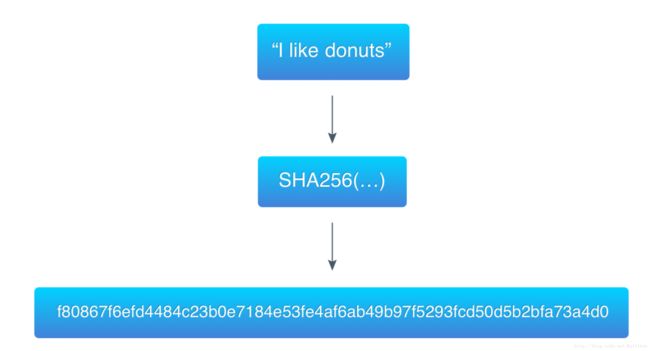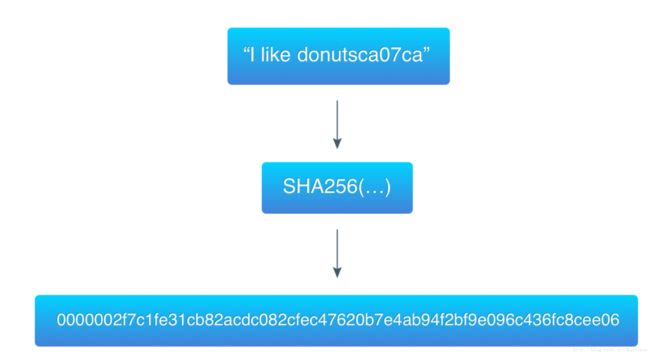GO语言实现区块链Part2 Proof-of-Work
Introduction
In the previous article we built a very simple data structure, which is the essence of blockchain database. And we made it possible to add blocks to it with the chain-like relation between them: each block is linked to the previous one. Alas, our blockchain implementation has one significant flaw: adding blocks to the chain is easy and cheap. One of the keystones of blockchain and Bitcoin is that adding new blocks is a hard work. Today we’re going to fix this flaw.
Proof-of-Work
A key idea of blockchain is that one has to perform some hard work to put data in it. It is this hard work that makes blockchain secure and consistent. Also, a reward is paid for this hard work (this is how people get coins for mining).
This mechanism is very similar to the one from real life: one has to work hard to get a reward and to sustain their life. In blockchain, some participants (miners) of the network work to sustain the network, to add new blocks to it, and get a reward for their work. As a result of their work, a block is incorporated into the blockchain in a secure way, which maintains the stability of the whole blockchain database. It’s worth noting that, the one who finished the work has to prove this.
This whole “do hard work and prove” mechanism is called proof-of-work. It’s hard because it requires a lot of computational power: even high performance computers cannot do it quickly. Moreover, the difficulty of this work increases from time to time to keep new blocks rate at about 6 blocks per hour. In Bitcoin, the goal of such work is to find a hash for a block, that meets some requirements. And it’s this hash that serves as a proof. Thus, finding a proof is the actual work.
One last thing to note. Proof-of-Work algorithms must meet a requirement: doing the work is hard, but verifying the proof is easy. A proof is usually handed to someone else, so for them, it shouldn’t take much time to verify it.
Hashing
In this paragraph, we’ll discuss hashing. If you’re familiar with the concept, you can skip this part.
Hashing is a process of obtaining a hash for specified data. A hash is a unique representation of the data it was calculated on. A hash function is a function that takes data of arbitrary size and produces a fixed size hash. Here are some key features of hashing:
- Original data cannot be restored from a hash. Thus, hashing is not encryption.
- Certain data can have only one hash and the hash is unique.
- Changing even one byte in the input data will result in a completely different hash.
Hashing functions are widely used to check the consistency of data. Some software providers publish checksums in addition to a software package. After downloading a file you can feed it to a hashing function and compare produced hash with the one provided by the software developer.
In blockchain, hashing is used to guarantee the consistency of a block. The input data for a hashing algorithm contains the hash of the previous block, thus making it impossible (or, at least, quite difficult) to modify a block in the chain: one has to recalculate its hash and hashes of all the blocks after it.
Hashcash
Bitcoin uses Hashcash, a Proof-of-Work algorithm that was initially developed to prevent email spam. It can be split into the following steps:
- Take some publicly known data (in case of email, it’s receiver’s email address; in case of Bitcoin, it’s block headers).
- Add a counter to it. The counter starts at 0.
- Get a hash of the
data + countercombination. - Check that the hash meets certain requirements.
- If it does, you’re done.
- If it doesn’t, increase the counter and repeat the steps 3 and 4.
Thus, this is a brute force algorithm: you change the counter, calculate a new hash, check it, increment the counter, calculate a hash, etc. That’s why it’s computationally expensive.
Now let’s look closer at the requirements a hash has to meet. In the original Hashcash implementation, the requirement sounds like “first 20 bits of a hash must be zeros”. In Bitcoin, the requirement is adjusted from time to time, because, by design, a block must be generated every 10 minutes, despite computation power increasing with time and more and more miners joining the network.
To demonstrate this algorithm, I took the data from the previous example (“I like donuts”) and found a hash that starts with 3 zero-bytes:
ca07ca is the hexadecimal value of the counter, which is 13240266 in the decimal system.
Implementation
Ok, we’re done with the theory, let’s write code! First, let’s define the difficulty of mining:
const targetBits = 24
In Bitcoin, “target bits” is the block header storing the difficulty at which the block was mined. We won’t implement a target adjusting algorithm, for now, so we can just define the difficulty as a global constant.
24 is an arbitrary number, our goal is to have a target that takes less than 256 bits in memory. And we want the difference to be significant enough, but not too big, because the bigger the difference the more difficult it’s to find a proper hash.
type ProofOfWork struct {
block *Block
target *big.Int
}
func NewProofOfWork(b *Block) *ProofOfWork {
target := big.NewInt(1)
target.Lsh(target, uint(256-targetBits))
pow := &ProofOfWork{b, target}
return pow
}
Here create ProofOfWork structure that holds a pointer to a block and a pointer to a target. “target” is another name for the requirement described in the previous paragraph. We use a big integer because of the way we’ll compare a hash to the target: we’ll convert a hash to a big integer and check if it’s less than the target.
In the NewProofOfWork function, we initialize a big.Int with the value of 1 and shift it left by 256 - targetBits bits. 256 is the length of a SHA-256 hash in bits, and it’s SHA-256 hashing algorithm that we’re going to use. The hexadecimal representation of target is:
0x10000000000000000000000000000000000000000000000000000000000
And it occupies 29 bytes in memory. And here’s its visual comparison with the hashes from the previous examples:
0fac49161af82ed938add1d8725835cc123a1a87b1b196488360e58d4bfb51e3
0000010000000000000000000000000000000000000000000000000000000000
0000008b0f41ec78bab747864db66bcb9fb89920ee75f43fdaaeb5544f7f76ca
The first hash (calculated on “I like donuts”) is bigger than the target, thus it’s not a valid proof of work. The second hash (calculated on “I like donutsca07ca”) is smaller than the target, thus it’s a valid proof.
You can think of a target as the upper boundary of a range: if a number (a hash) is lower than the boundary, it’s valid, and vice versa. Lowering the boundary will result in fewer valid numbers, and thus, more difficult work required to find a valid one.
Now, we need the data to hash. Let’s prepare it:
func (pow *ProofOfWork) prepareData(nonce int) []byte {
data := bytes.Join(
[][]byte{
pow.block.PrevBlockHash,
pow.block.Data,
IntToHex(pow.block.Timestamp),
IntToHex(int64(targetBits)),
IntToHex(int64(nonce)),
},
[]byte{},
)
return data
}
This piece is straightforward: we just merge block fields with the target and nonce. nonce here is the counter from the Hashcash description above, this is a cryptographic term.
Ok, all preparations are done, let’s implement the core of the PoW algorithm:
func (pow *ProofOfWork) Run() (int, []byte) {
var hashInt big.Int
var hash [32]byte
nonce := 0
fmt.Printf("Mining the block containing \"%s\"\n", pow.block.Data)
for nonce < maxNonce {
data := pow.prepareData(nonce)
hash = sha256.Sum256(data)
fmt.Printf("\r%x", hash)
hashInt.SetBytes(hash[:])
if hashInt.Cmp(pow.target) == -1 {
break
} else {
nonce++
}
}
fmt.Print("\n\n")
return nonce, hash[:]
}
First, we initialize variables: hashInt is the integer representation of hash; nonce is the counter. Next, we run an “infinite” loop: it’s limited by maxNonce, which equals to math.MaxInt64; this is done to avoid a possible overflow of nonce. Although the difficulty of our PoW implementation is too low for the counter to overflow, it’s still better to have this check, just in case.
In the loop we:
- Prepare data.
- Hash it with SHA-256.
- Convert the hash to a big integer.
- Compare the integer with the target.
As easy as it was explained earlier. Now we can remove the SetHash method of Blockand modify the NewBlock function:
func NewBlock(data string, prevBlockHash []byte) *Block {
block := &Block{time.Now().Unix(), []byte(data), prevBlockHash, []byte{}, 0}
pow := NewProofOfWork(block)
nonce, hash := pow.Run()
block.Hash = hash[:]
block.Nonce = nonce
return block
}
Here you can see that nonce is saved as a Block property. This is necessary because nonce is required to verify a proof. The Block structure now looks so:
type Block struct {
Timestamp int64
Data []byte
PrevBlockHash []byte
Hash []byte
Nonce int
}
Alright! Let’s run the program to see if everything works fine:
Mining the block containing "Genesis Block"
00000041662c5fc2883535dc19ba8a33ac993b535da9899e593ff98e1eda56a1
Mining the block containing "Send 1 BTC to Ivan"
00000077a856e697c69833d9effb6bdad54c730a98d674f73c0b30020cc82804
Mining the block containing "Send 2 more BTC to Ivan"
000000b33185e927c9a989cc7d5aaaed739c56dad9fd9361dea558b9bfaf5fbe
Prev. hash:
Data: Genesis Block
Hash: 00000041662c5fc2883535dc19ba8a33ac993b535da9899e593ff98e1eda56a1
Prev. hash: 00000041662c5fc2883535dc19ba8a33ac993b535da9899e593ff98e1eda56a1
Data: Send 1 BTC to Ivan
Hash: 00000077a856e697c69833d9effb6bdad54c730a98d674f73c0b30020cc82804
Prev. hash: 00000077a856e697c69833d9effb6bdad54c730a98d674f73c0b30020cc82804
Data: Send 2 more BTC to Ivan
Hash: 000000b33185e927c9a989cc7d5aaaed739c56dad9fd9361dea558b9bfaf5fbe
Yay! You can see that every hash now starts with three zero bytes, and it takes some time to get these hashes.
There’s one more thing left to do: let’s make it possible to validate proof of works.
func (pow *ProofOfWork) Validate() bool {
var hashInt big.Int
data := pow.prepareData(pow.block.Nonce)
hash := sha256.Sum256(data)
hashInt.SetBytes(hash[:])
isValid := hashInt.Cmp(pow.target) == -1
return isValid
}
And this is where we need the saved nonce.
Let’s check one more time that everything’s ok:
func main() {
...
for _, block := range bc.blocks {
...
pow := NewProofOfWork(block)
fmt.Printf("PoW: %s\n", strconv.FormatBool(pow.Validate()))
fmt.Println()
}
}
Output:
...
Prev. hash:
Data: Genesis Block
Hash: 00000093253acb814afb942e652a84a8f245069a67b5eaa709df8ac612075038
PoW: true
Prev. hash: 00000093253acb814afb942e652a84a8f245069a67b5eaa709df8ac612075038
Data: Send 1 BTC to Ivan
Hash: 0000003eeb3743ee42020e4a15262fd110a72823d804ce8e49643b5fd9d1062b
PoW: true
Prev. hash: 0000003eeb3743ee42020e4a15262fd110a72823d804ce8e49643b5fd9d1062b
Data: Send 2 more BTC to Ivan
Hash: 000000e42afddf57a3daa11b43b2e0923f23e894f96d1f24bfd9b8d2d494c57a
PoW: true
Conclusion
Our blockchain is a step closer to its actual architecture: adding blocks now requires hard work, thus mining is possible. But it still lacks some crucial features: the blockchain database is not persistent, there are no wallets, addresses, transactions, and there’s no consensus mechanism. All these things we’ll implement in future articles, and for now, happy mining!

